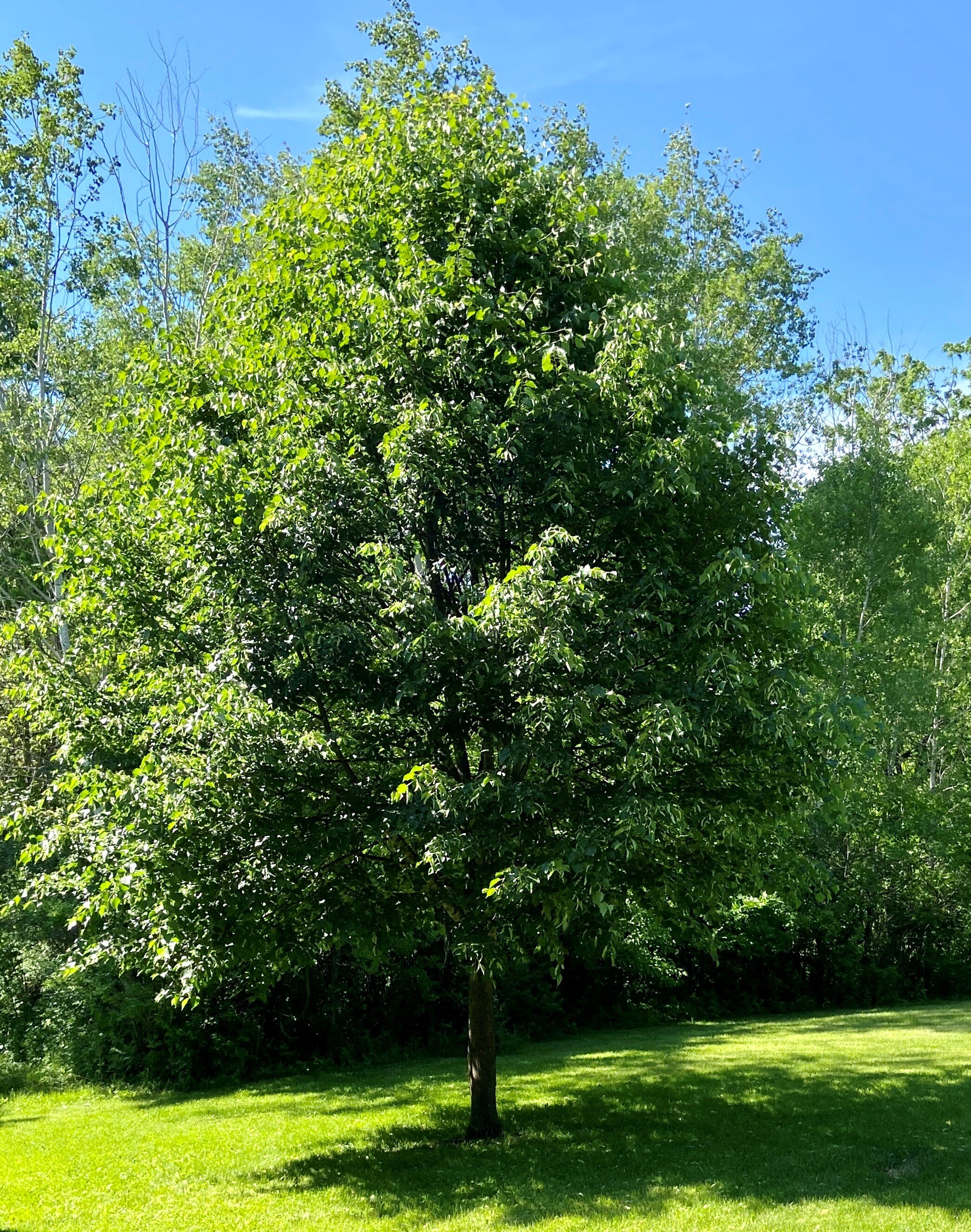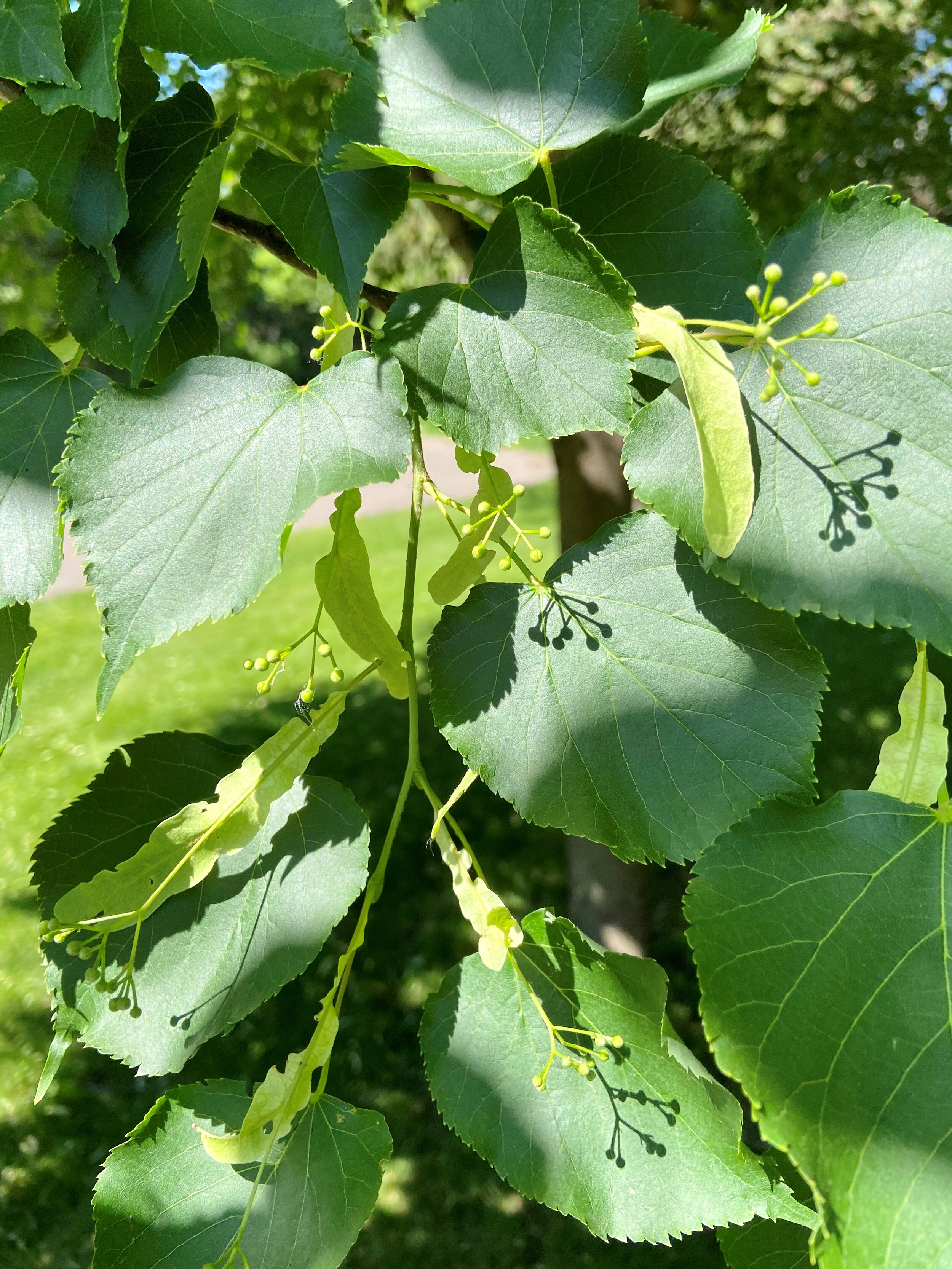June and the Beautiful Linden Tree
“June Bride” is a thing in Minnesota because of the explosion of green. We can think of no single better standard bearer of that explosion than the European Littleleaf (Tilia cordata) and the American Linden (Tilia americana) - also known as a Basswood. These are easy trees to recognize in late June as they come into prolific and fragrant bloom. The trees are loaded with clusters of fragrant, creamy-white flowers that perfume the air and attract honeybees and other pollinators. The blooms are an excellent source of honey for about two weeks. The American Linden has large, heart-shaped leaves, 4 to 6 inches, while Littleleaf leaves, are 2 to 4 inches. The American Linden is a symmetrical tree while Littleleaf is compact and pyramidal. Landscape architects favor Littleleaf for its medium-fast annual growth of up to 2 feet so it has become ubiquitous in urban landscapes and is heavily planted on golf courses and corporate campuses. Like all trees, they need pruning and routine health care but are generally robust.
Littleleaf buds emerge in the first two weeks of June.
All this beauty may come with a price. Japanese beetles also love Littleleaf. The life-cycle of the Japanese beetle requires control through a seasonal plan that includes summer and fall control. Interestingly, good turf management practices will help to control the beetle during its larval stage. The damage caused by the adult Japanese beetle once it emerges from the ground to feast on leaves is rarely lethal but it is disfiguring. With a little bit of planning, Linden tree foliage will remain intact and provide abundant shade and beauty throughout the season.
Contact Prescription Landscape today and we will start the protection program your Linden trees need to keep them safe from Japanese Beetle damage!
The Japanese beetle adult form is shown on the right. It emerges from the ground and flies up into trees, grapevines and rose bushes to feast on leaves.



